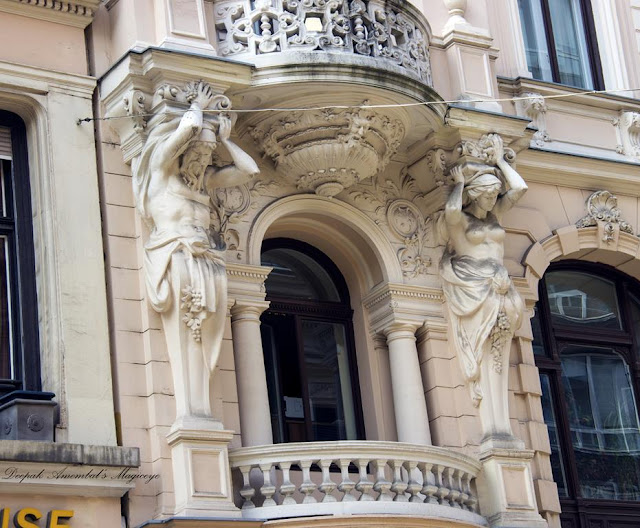Budapest,
the capital of Hungary, considered to be one of the largest cities in the
European Union, is a combination of two cities Buda and Pest, which were united
in 1873 to form Budapest.
Like most
of the cities in Europe Budapest too bears the scars left by the Nazis. Let us
take a walk through this beautiful city starting in Pest and then climbing to
Buda to discover what makes it one of the most visited cities in Europe. Buda
and Pest are separated by the Danube river.
The architecture is marvellous and leaves you spellbound with its beauty.
The art on the exteriors of buildings are a sight to behold!
Beautiful doors too!
The streets are lined with pretty flowering plants on lamp posts.
The Great Synagogue is the second largest synagogue in the world!
Another impressive structure is the St.
Stephen's Basilica, a Roman Catholic basilica It is
named in honour of Stephen, the first King of Hungary, whose supposed right
hand is housed in the reliquary.
The ‘Shoes
on the Danube Bank’ is a memorial to honour the Jews who were killed by fascist
Arrow Cross militiamen in Budapest during World War II. They were ordered to
take off their shoes, and
were shot at the edge of the water so that their
bodies fell into the river and were carried away with the flow of the river
while their shoes were left behind. The story is that the killers believed that
the Jews had hidden money and jewels in their shoes hence were asked to take off
their shoes before being killed.
The
Széchenyi Chain Bridge is a suspension bridge that spans the River Danube
between Buda and Pest, and was the first permanent bridge across the Danube in
Hungary, opened in 1849.
Just before reaching this bridge you will come across the very impressive Hungarian Parliament building that is awe inspiring.
Across the bridge is the Buda castle, the historical castle and palace complex of the Hungarian kings in Budapest,
and was first completed in 1265.
In Buda you can see the magnificent Mathias church opposite the Fisherman's bastion.
Although no
archaeological remains exist, as per the local story, it was originally built
in Romanesque style in 1015. The current building was constructed in the florid
Gothic style in the second half of the 14th century and was extensively
restored in the late 19th century.
This is the Fisherman's bastion
Click here to see more pictures of Budapest that I have captured.

















Hari OM
ReplyDeleteOutstanding!!! Words fail before such magnificence, I find... YAM xx
Hari Om
DeleteYou said it!
Amazing place. Beautiful pics from Budapest.
ReplyDeleteThank you Rupam
DeleteGreat captures. I was there once again.
ReplyDeleteThe sight of those shoes is really touching.
Thank you Indrani.
DeleteRiver Danube has inspired music all over the world. Thanks for the excellent virtual tour of Budapest.
ReplyDeleteGlad you liked it. Thank you. 😊
DeleteWow - really gorgeous!
ReplyDeleteHaven't visited Budapest as yet, however been to territories near by (I see the architectural synchronicity) Thanks for sharing this lovely post :)
ReplyDeleteA pleasure to share. Thank you.
DeleteBudapest is a beautiful city, I've been there once many many years ago.
ReplyDeleteThese photos are wonderful.
Thank you Orvokki.
Delete